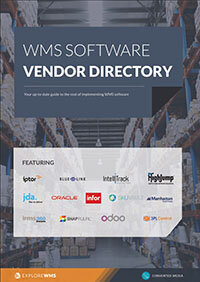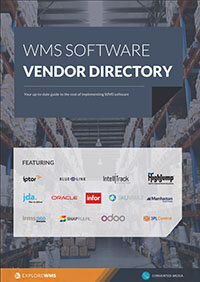Three ways your warehouse can benefit from supply chain analytics
Supply chain analytics has the potential to impact almost all areas of your operation, from what’s being done in the warehouse right now to product planning for next year, and everything inbetween.
Data modeling provides insight into your planning, scheduling, responsiveness to customer needs, understanding of demands and orders, supply chain execution, and much more. If you’re considering an investment in these supply chain analytics, three are many different areas of potential improvement open to you.
Let’s look at three of the most significant impacts on your supply chain, affecting revenue and profitability regarding the risks you face, your customers’ needs, and your ability to adapt to broad industry changes.
1. Deeper understanding of your risks
Risk lurks everywhere in the supply chain, from errors with suppliers and carriers to product spoilage and theft.
Successful supply chain management includes a look at known risks, plus predictions about potential areas of risk. Supply chain analytics can provide you with more information and trends around the risks you face plus help you review all customers and vendors to determine new patterns of risk.
Analytics also can help professionals get an understanding of how significant the impact of a problem could be, which will help you generate strategies to address or mitigate concerns ahead of time.
The greater the volume of historical data you can integrate, the stronger your understanding becomes. You’ll position your team to understand risks, scenario-test responses, and enhance risk management techniques to catch warning signs.
2. Demand planning and optimization
Knowing what your customer is going to do tomorrow and next month ensures you can have the products, service, and employees allocated to address customer needs as soon as they arise.
Predicting and meeting demands will show you what is needed to grow your organization today, what products or services you can minimize when they become less profitable, or learn what customers need six months after an initial order.
Demand forecasting with supply chain analytics goes significantly beyond informing your warehouse operations. This analysis provides a deeper understanding of customers over time, which can inform your sales and marketing from follow-up drip campaigns, initial offers, and when to push customer service calls.
3. Improved flexibility and lean running
The lean supply chain has been a hot topic of conversation for the past decade, and supply chain analytics are the latest tools you can use to run smoother and nimbler.
Analytics covering your warehouse, partner responses, and customer needs will enable you to make decisions more quickly and generally leads to better-informed decisions. You’re moving from tactics that focus on what happened last year to models that predict what will happen tomorrow.
Investments in supply chain analytics also push companies to invest in data visibility throughout their supply chain. As this grows, you have more data to use for faster responses — creating an understanding of your entire profitability instead of just a component look.
Free white paper

WMS vendor directory
Save hours of WMS vendor research with this free guide

Related articles
-

4 supply chain management requirements to factor into your WMS selection
Choose a WMS with these features to meet your supply chain management needs
-

Mission-critical features of food lot traceability software
What features of food traceability software will help you during a food recall
-

How WMS improves your supply chain visibility
The key benefits WMS brings to your supply chain

